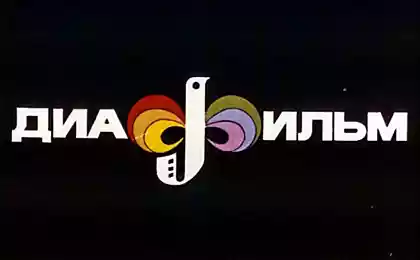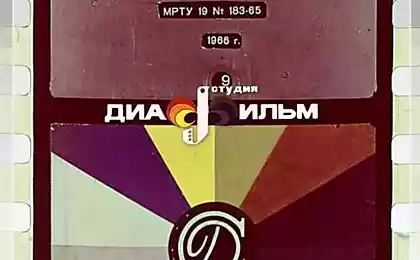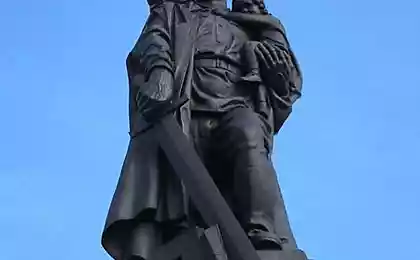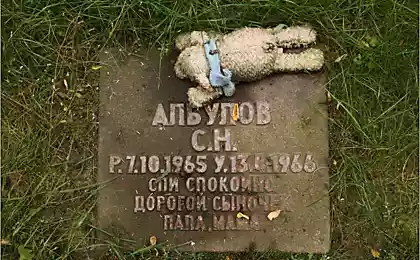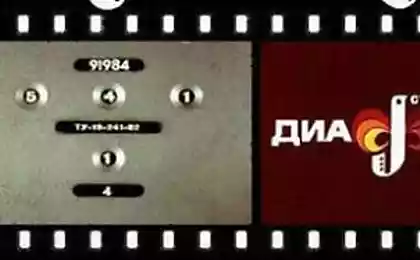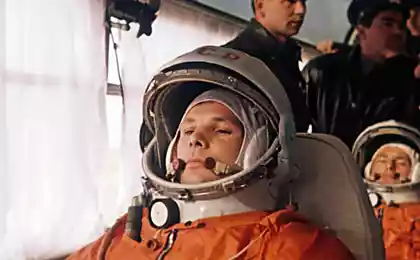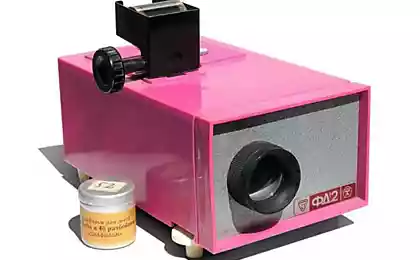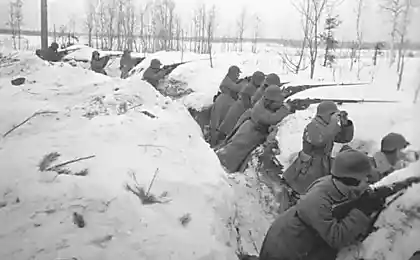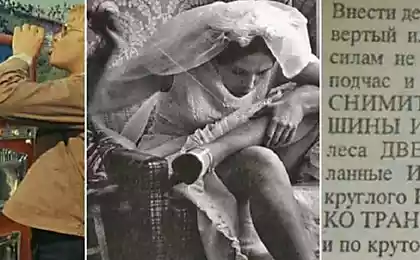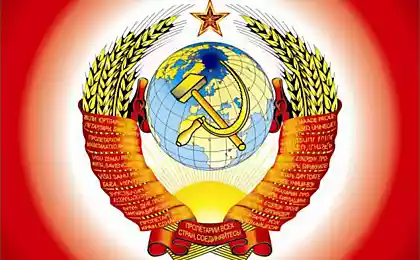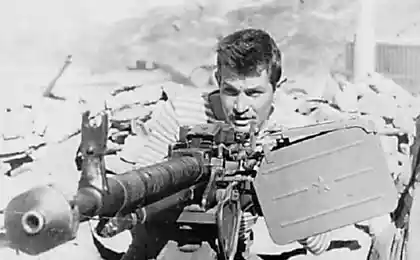1208
The history of the Soviet filmstrips (16 photos)
For many of us have become vivid memories filmstrips, we watched as a child.
The quiet hum of the projector-filmoskop and bright beam that turns white sheet on the wall in the Etch A Sketch, which alternate color pictures ... all this will forever remain in the memory of the child. Remember the mood at the moment? The joy and impatience, while the older custom objects and charged with the filmstrip in the film projector, your delight in the moment when the wall appears the first frame, and the tale begins ...
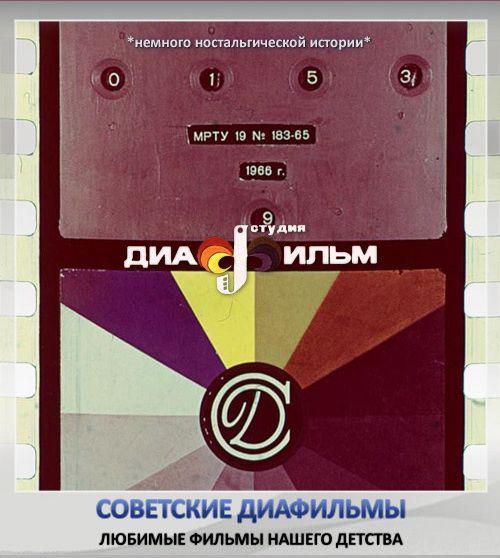

Our present life it is easy to imagine without the TVs, DVD-players, computers, and other wonders of technology, but they could not drive out of your heart that pure childhood joy of color stories, drawn a beam of light on the white sheet.
Filmstrip - a series of positive images (slides), united by a common theme in a short film, usually consisting of 20-50 frames. Filmstrip associated with comics, cartoons, book illustrations, but also differs from them. The name itself comes from the Greek δια, which in this context means "the transition from the beginning to the end"; and Eng. film - roll picture (movie) film.

Transparancy film is based on the change of static frames (as opposed to film). Its frame is closer to the easel painting and graphics, so some artists and include the filmstrip to the visual arts. In the frame filmstrip present movement, expression, like any work of art. This is an issue of the transition from frame to frame, and a combination of adhesion, as well as the problem of compliance with the text of the image.

The word "filmstrip" and the subject which it represents, is well known to all adults who grew up in Soviet children. The number of people who do not know what a "filmstrip" is increasing every day. It explains what filmstrip, is not so simple. Because filmstrip - it's not just a story told by means of text and images, divided into frames. It is also a kind of technique presentation viewer stories in which each frame is considered individually.
Filmstrip - it is also a pastime, organized by manual movement of the frame, reading out loud signatures, and the collective by viewing images projected on the screen in the dark. Filmstrips - an integral part of the Soviet way of life and culture.
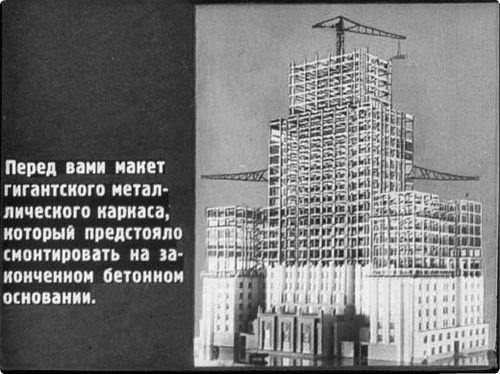
In the second half of the twentieth century, film strips are widely used in the USSR, they were common in everyday life, in particular the establishment of numerous film strips - illustrated tales, historical and literary works. Technical filmstrips designed for the educational process.
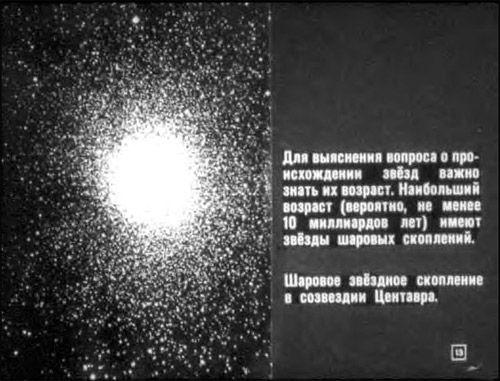
Viewing of slides by using filmoskop or slide projector, projecting the image on the screen, in the simplest case, it was a white wall or sheet.

Overhead projector PD-2
In Western Europe and America at the same time there are some kinds of filmstrips home screen entertainment for children and adults, but in our country the practice of viewing art filmstrips was spread everywhere. Filmstrips helped popularize the art itself is the love and support of the audience. But the Soviet filmstrip began as a cartoon by the enthusiasts. Filmstrips were new technical step, allowing you to view images using inexpensive equipment, such as a "magic lantern" (a device for projecting images).
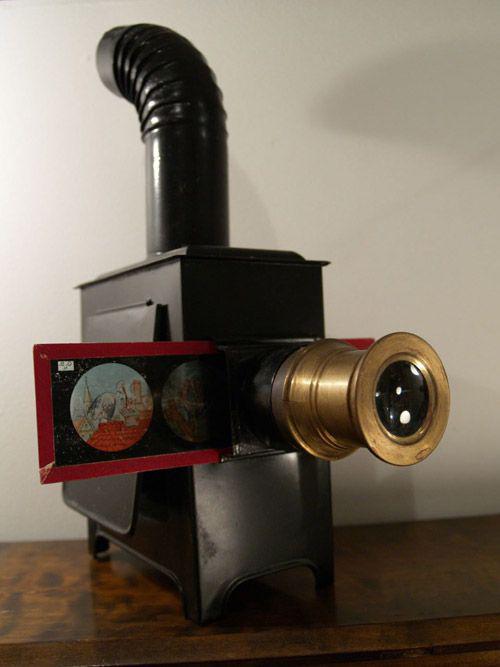
Magic Lantern
It is interesting to note that the filmstrip appeared much earlier film, and even photography. The earliest devices, magic lanterns, design principles which were not significantly different from overhead projectors of the XX century, belong to the first half of the XVI century.
By the end of the XIX century filmstrip it has already taken a firm place in people's lives. Slides were produced as film or glass. Staged mass demonstrations, mainly in education, at least, for entertainment purposes. In pre-revolutionary Russia were filmstrips on natural science, geography, most of the "misty pictures" was dedicated to the history of the Russian state ("25 years of the reign of Emperor Alexander II», «St. Cyril and Methodius"), were also dramatizations of literary works ("The Ice House" "Masquerade"). The show was accompanied by pictures of reading aloud booklet attached to each picture.

One of the first Soviet overhead projectors unit was called "IZBACH" designed employee Glavpolitprosvet P. Mershin. Built-in dynamo and a rheostat allowed to use it where there was no electricity.
Manufacturing technology filmstrips as illustrative material replaces the prior art use of individual glass slides. Slides were not very comfortable, because they had a lot of weight (manufactured on glass photographic plates) and to store them needed a lot of space.
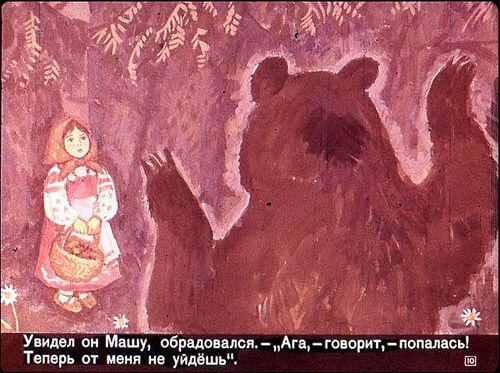
In 1930, in Moscow it was founded Studio "filmstrip" manufactured first black and white and then colored filmstrips. Filmstrips considered as a means of agitation, they were used for training and school, lecture and outreach, they did not require light equipment, and performance effects were similar to the movies.
In 1934 he was made the first film strips for the children: "Baggage" and "Fire" (by S. Marshak), "Girl-revushka" (by A. Barto) and several others. Later, there were filmstrips of films ("The New Gulliver" 1940 "Battleship" Potemkin "," The Cranes Are Flying "and so on.).

The Judge "filmstrip" worked as a consultant and author many famous writers: Tolstoy, L. Kassil, K. Chukovsky, S. Marshak, S. Mikhalkov, V. Bianchi and others. In the creation of slides involved artists: E. Evgan, Kukryniksy V. Suteev, K. Rotov, W.Radloff A. Bray and others.
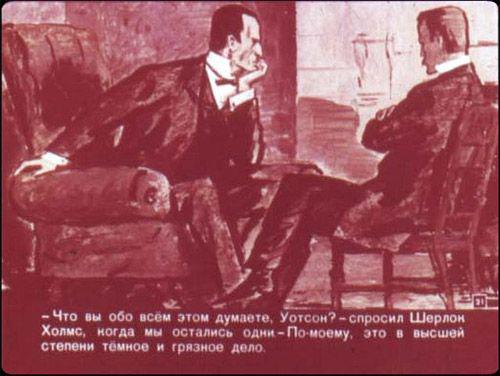
Beginning in the late 50s. production of art has become a mass of slides: studio "filmstrip" began to produce filmstrips 300-400 names per year. It was launched voiced filmstrips, sound recording them on phonograph records; to educational films produced in the form accompanying text book. An important step was the transition from flammable nitrocellulose of film - to secure "acetate" basis.
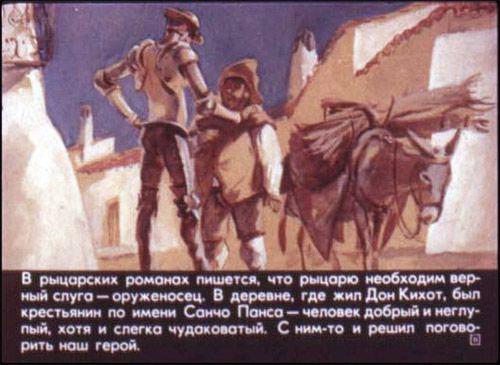
From 60th - 70th. The twentieth century, with the advent of more sophisticated projectors, overhead projectors, kinosёmochnyh and cinema projection apparatus for narrow film (16 mm and 8 mm) allow you to view both old filmstrips and color professional and amateur slides and movies, the decline of "the era of slides».
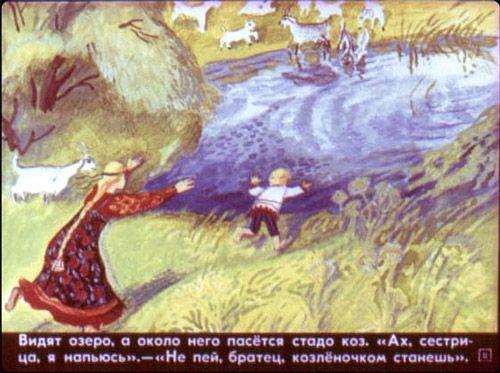
There are now digitized film strips that can be stored on a flash drive or hard drive, and play with a normal projector. Some filmstrips can even look online to niche sites (links we share at the end of the publication).
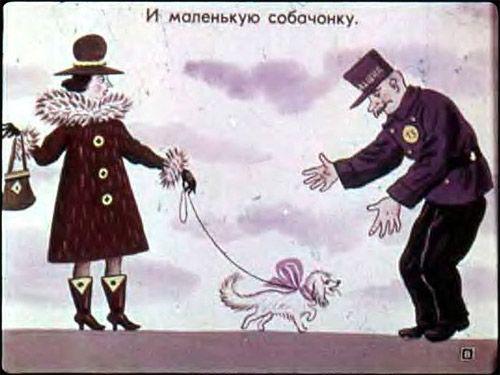
But, perhaps, even new technologies are not able to replace the end of the cozy miracle "magic lantern". It could not be, because the world filmstrip - this extraordinary world. Pay off the room light, direct light projector onto a white wall, and to meet with their favorite characters - it means to forget about multi-channel acoustics, plasma screens and home theater; it's like to come in an expensive car to his old apartment and suddenly find there is a teddy bear that was once a childhood best friend ...

The quiet hum of the projector-filmoskop and bright beam that turns white sheet on the wall in the Etch A Sketch, which alternate color pictures ... all this will forever remain in the memory of the child. Remember the mood at the moment? The joy and impatience, while the older custom objects and charged with the filmstrip in the film projector, your delight in the moment when the wall appears the first frame, and the tale begins ...


Our present life it is easy to imagine without the TVs, DVD-players, computers, and other wonders of technology, but they could not drive out of your heart that pure childhood joy of color stories, drawn a beam of light on the white sheet.
Filmstrip - a series of positive images (slides), united by a common theme in a short film, usually consisting of 20-50 frames. Filmstrip associated with comics, cartoons, book illustrations, but also differs from them. The name itself comes from the Greek δια, which in this context means "the transition from the beginning to the end"; and Eng. film - roll picture (movie) film.

Transparancy film is based on the change of static frames (as opposed to film). Its frame is closer to the easel painting and graphics, so some artists and include the filmstrip to the visual arts. In the frame filmstrip present movement, expression, like any work of art. This is an issue of the transition from frame to frame, and a combination of adhesion, as well as the problem of compliance with the text of the image.

The word "filmstrip" and the subject which it represents, is well known to all adults who grew up in Soviet children. The number of people who do not know what a "filmstrip" is increasing every day. It explains what filmstrip, is not so simple. Because filmstrip - it's not just a story told by means of text and images, divided into frames. It is also a kind of technique presentation viewer stories in which each frame is considered individually.
Filmstrip - it is also a pastime, organized by manual movement of the frame, reading out loud signatures, and the collective by viewing images projected on the screen in the dark. Filmstrips - an integral part of the Soviet way of life and culture.

In the second half of the twentieth century, film strips are widely used in the USSR, they were common in everyday life, in particular the establishment of numerous film strips - illustrated tales, historical and literary works. Technical filmstrips designed for the educational process.

Viewing of slides by using filmoskop or slide projector, projecting the image on the screen, in the simplest case, it was a white wall or sheet.

Overhead projector PD-2
In Western Europe and America at the same time there are some kinds of filmstrips home screen entertainment for children and adults, but in our country the practice of viewing art filmstrips was spread everywhere. Filmstrips helped popularize the art itself is the love and support of the audience. But the Soviet filmstrip began as a cartoon by the enthusiasts. Filmstrips were new technical step, allowing you to view images using inexpensive equipment, such as a "magic lantern" (a device for projecting images).

Magic Lantern
It is interesting to note that the filmstrip appeared much earlier film, and even photography. The earliest devices, magic lanterns, design principles which were not significantly different from overhead projectors of the XX century, belong to the first half of the XVI century.
By the end of the XIX century filmstrip it has already taken a firm place in people's lives. Slides were produced as film or glass. Staged mass demonstrations, mainly in education, at least, for entertainment purposes. In pre-revolutionary Russia were filmstrips on natural science, geography, most of the "misty pictures" was dedicated to the history of the Russian state ("25 years of the reign of Emperor Alexander II», «St. Cyril and Methodius"), were also dramatizations of literary works ("The Ice House" "Masquerade"). The show was accompanied by pictures of reading aloud booklet attached to each picture.

One of the first Soviet overhead projectors unit was called "IZBACH" designed employee Glavpolitprosvet P. Mershin. Built-in dynamo and a rheostat allowed to use it where there was no electricity.
Manufacturing technology filmstrips as illustrative material replaces the prior art use of individual glass slides. Slides were not very comfortable, because they had a lot of weight (manufactured on glass photographic plates) and to store them needed a lot of space.

In 1930, in Moscow it was founded Studio "filmstrip" manufactured first black and white and then colored filmstrips. Filmstrips considered as a means of agitation, they were used for training and school, lecture and outreach, they did not require light equipment, and performance effects were similar to the movies.
In 1934 he was made the first film strips for the children: "Baggage" and "Fire" (by S. Marshak), "Girl-revushka" (by A. Barto) and several others. Later, there were filmstrips of films ("The New Gulliver" 1940 "Battleship" Potemkin "," The Cranes Are Flying "and so on.).

The Judge "filmstrip" worked as a consultant and author many famous writers: Tolstoy, L. Kassil, K. Chukovsky, S. Marshak, S. Mikhalkov, V. Bianchi and others. In the creation of slides involved artists: E. Evgan, Kukryniksy V. Suteev, K. Rotov, W.Radloff A. Bray and others.

Beginning in the late 50s. production of art has become a mass of slides: studio "filmstrip" began to produce filmstrips 300-400 names per year. It was launched voiced filmstrips, sound recording them on phonograph records; to educational films produced in the form accompanying text book. An important step was the transition from flammable nitrocellulose of film - to secure "acetate" basis.

From 60th - 70th. The twentieth century, with the advent of more sophisticated projectors, overhead projectors, kinosёmochnyh and cinema projection apparatus for narrow film (16 mm and 8 mm) allow you to view both old filmstrips and color professional and amateur slides and movies, the decline of "the era of slides».

There are now digitized film strips that can be stored on a flash drive or hard drive, and play with a normal projector. Some filmstrips can even look online to niche sites (links we share at the end of the publication).

But, perhaps, even new technologies are not able to replace the end of the cozy miracle "magic lantern". It could not be, because the world filmstrip - this extraordinary world. Pay off the room light, direct light projector onto a white wall, and to meet with their favorite characters - it means to forget about multi-channel acoustics, plasma screens and home theater; it's like to come in an expensive car to his old apartment and suddenly find there is a teddy bear that was once a childhood best friend ...

